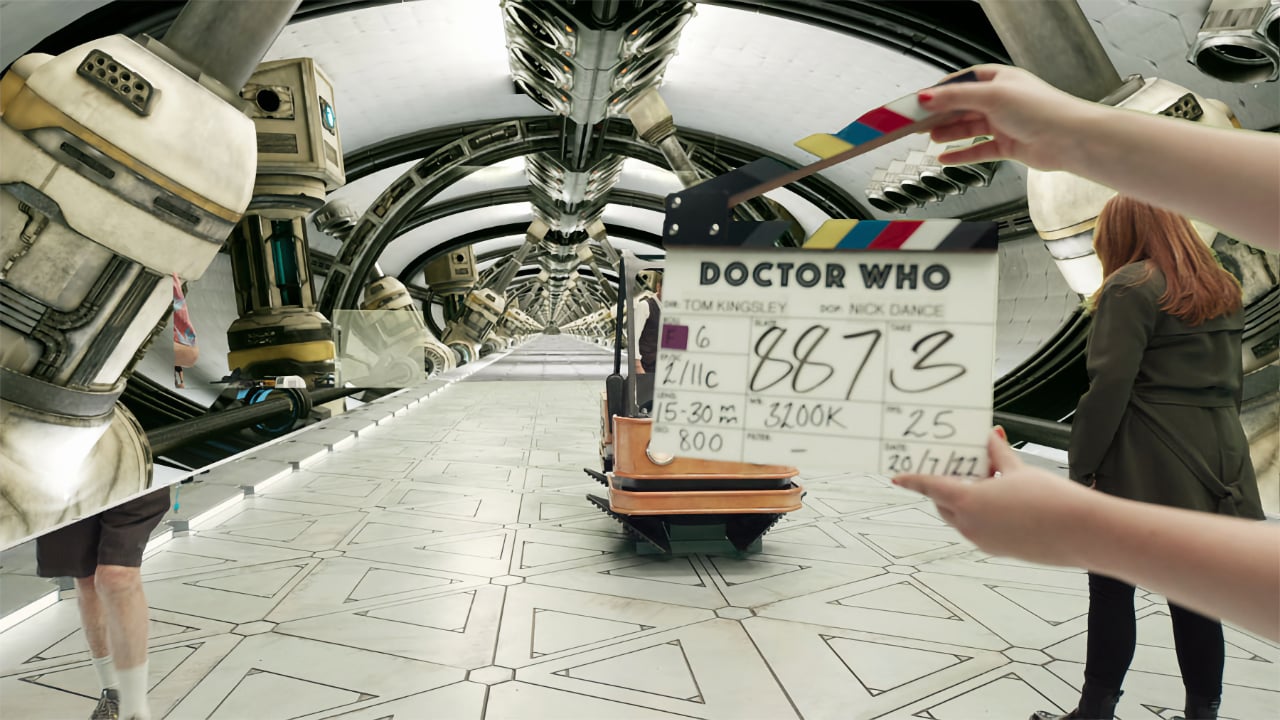
Mo-Sys Engineering’s NearTime automated re-rendering service for on-set Virtual Production was utilized to deliver VFX scenes for the Dr Who 60th Anniversary Special at what it reckons was a fraction of the cost of regular pipelines.
Painting Practice is an award-winning boutique studio known for allowing filmmakers to develop their ideas and extend creative possibilities. Together with leading CGI, animation, and VFX specialists RealTime, it approached Mo-Sys in 2022 with the idea of forming a new cost-efficient workflow for a particularly VFX-heavy special episode of Dr Who.
“This ambitious diamond anniversary Dr Who special was set to have more than 250 VFX shots, meaning traditional VFX approaches would be cost-prohibitive. So, we had to think differently,” explains James Uren, Mo-Sys Technical Director.
Painting Practice was in the habit of using Unreal Engine to create animated pre-visualizations of complex VFX sequences. Could this be extended to whole scenes or a whole episode? Could those pre-visualizations be brought onto the set with the actual camera? Could the team use Unreal Engine right up to the 'Final Pixel,' automatically re-rendering what had been filmed on set?
The answer you are looking for here to all the above is ‘yes.’
RealTime and Mo-Sys had recently collaborated on Netflix production Dance Monsters, where six cameras and eight monster characters were combined in real-time - also using the Unreal Engine and Mo-Sys VP Pro to film it as a live light-entertainment show. As part of this Mo-Sys and RealTime developed a pipeline for transferring the precision camera and lens tracking data from Mo-Sys StarTracker through to post-production, to help automate and dramatically speed up the VFX workload.
Meanwhile, Mo-Sys had built and patented its NearTime solution in parallel and in partnership with AWS. NearTime offers a dual workflow that enables automated Unreal re-rendering in the cloud. Tracking data is re-rendered with background plates and delivered back with increased quality and/or resolution in the same VFX delivery window, making on-set renders available for real-time feedback.
Putting all that together — pre-visualization, on-set camera tracking, real-time pre-viz, NearTime rendering, and automated VFX pipelines — meant that VFX-heavy special could be completed with some excellent visuals throughout at a fraction of the cost of traditional VFX. Which, considering the pressure that the BBC is under at the moment, even with its most popular programming, is probably no bad thing.
And no one mentioned reversing the polarity once… Probably.
Tags: Post & VFX


Comments